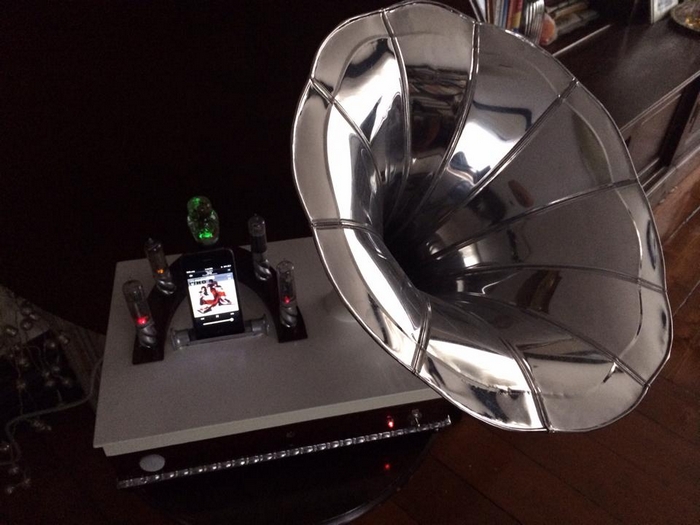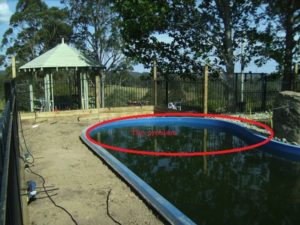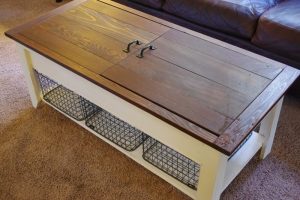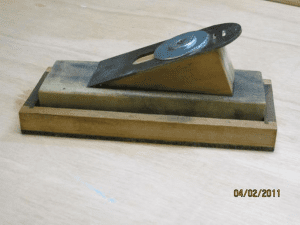by bricabracwizard (Michael Greensmith)
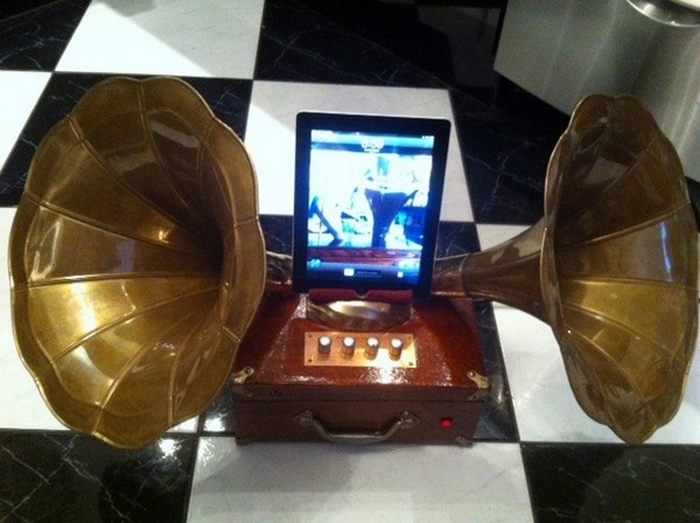
Steampunk came about in the late ’80′s. Basically coined as Victorian science fiction. With that in mind I decided to create an old fashioned music player with new fang dangled equipment. The first step was finding a box to encase the equipment in. I found this old indoor bowls case by the side of the road being thrown away. The picture does it more justice than it’s worth… the case was in very bad shape.

I dismantled the box and carefully sanded/polished all the components, stained, varnished and reassembled the case. This wasn’t a particularly well made box… ahhh the nostalgia!
Looking good now! At this point I started playing around with a few ideas to see what would and wouldn’t work…

These are just two ideas from about 12 ideas I had, unfortunately I didn’t take pictures of all the ideas I had. One idea was to have the speakers come out of the side of the box but this made them too low and the whole thing too wide.
[adinserter block=”11″]
Next came the drilling of holes in the case to accommodate the speakers, control knobs and power socket.
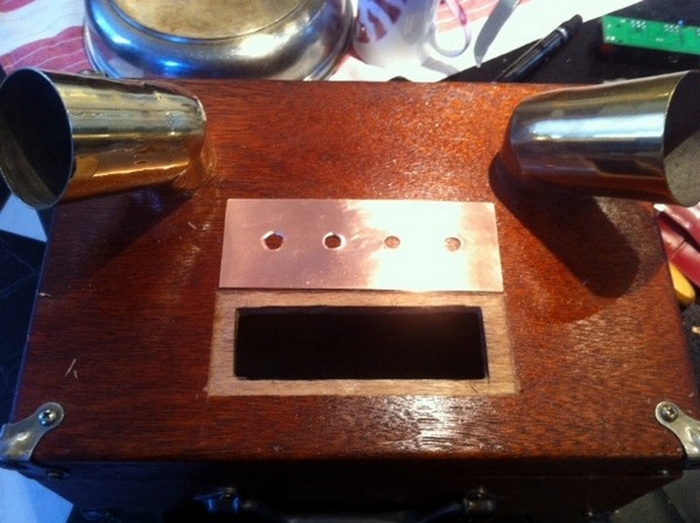
Here you can see the square hole I cut for the control knobs. The wood is too thick to just drill holes for the control stems and poke them through. The copper rectangle is about 1mm thick. Using a carving tool I cut out just enough wood to lay the copper insert in so that it is level with the top of the case. The amplifier I used was from Jaycar which also has an input for a microphone. At 25 watts per channel, this is a sweet sounding amp! Of course you can use whatever amp you have on hand.

In order for the controls to be where I wanted them a lot of wires had to be extended. As you can see from the last picture, it was a bit of a nightmare! When rewiring or remounting electronics make sure everything is secured with no chance of movement. Do not do this if you are not comfortable with electronics….get someone who knows.
After extensive testing to make sure everything worked, time to create the holder for the iPhone/iPad/iPod. I managed to find an old dented brass vase. I cut off one side of the vase using a rotary drill with a metal cutting disc attached. The copper plate was cut in the same way.
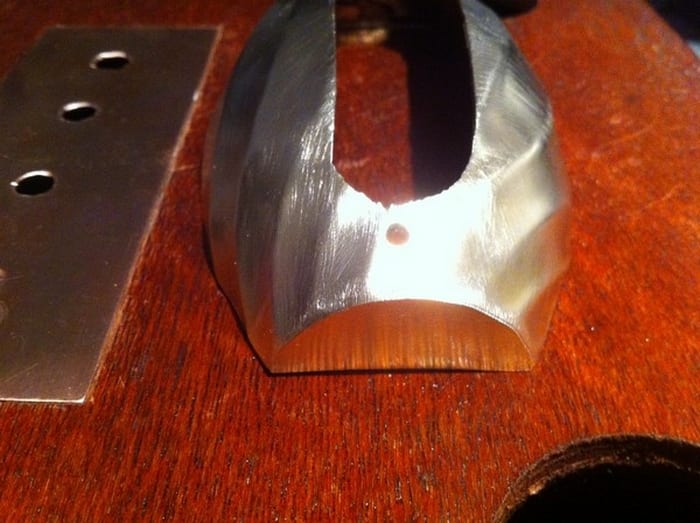
Next I managed to find an old chandelier upright brass pipe looking like entwined rope. This would hold the device upright. The connector (30 pin) can be bought off ebay with an audio out. I cut this connector in half to fit the chandelier pipe and then soldered on new wire to the two halves. To make sure the wire didn’t come off hot glue was used…..in abundance.

Then it was time to split the chandelier pipe, open it up and glue a protective cloth over it,

To attach the cradle to the case and to secure the connector to the pipe I cut some wood and hot glued it in with the connector. The picture below shows how snuggly it fits together. A half moon has been cut out of the pipe so as to be able to operate the centre button on the iPhone.


The control panel lettering was achieved with a label lettering machine using a transparent tape. The knobs I finally ended up with are guitar knobs which were purchased on ebay. Now all that is left is to create the power inlet point. Again a hole was cut in the back for the power point and a copper sheet cut to fit the hole. Unfortunately a fuzzy picture.

Now all we need to add are the brass horns. The ‘elbows’ were inserted into holes cut in the top of the case, glued (with 2 part epoxy) and screwed. Then the horns were epoxied into the brass elbows.
Earlier on you may remember I said that I thought of putting the speaker holes in the side
of the case….well, I did cut the holes and then decided the horns looked better coming out of the top of the case. Now I had to cover the holes in the side. This turned out to be a blessing in disguise. These holes allowed the bass notes to come out and the brass horns worked better with the treble tones. The holes were concealed with mesh and a speaker grill from another project. Cut the mesh & grid with the rotary cutter.

You will see in the next picture the speakers were screwed to the underside of the case lid.

Thanks for joining me. I hope I’ve inspired you to do better than buy a mass produced phone or tablet sound system. If it all gets too much I have been consigned to make them for other people. They come with a 2 year warranty and can be ordered on my blog at www.steampunkwayoflife.blogspot.com.au . You can also order our catalogue and
choose from a variety of Steampunk audio players.
Questions? Ask away. Suggestions? I’m listening. Have you ever tackled a project like this? How did it turn out?
Update: 13th of january, 2014
Thought you might like to see this latest toy ?
